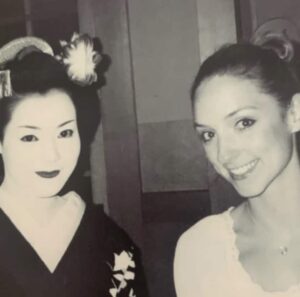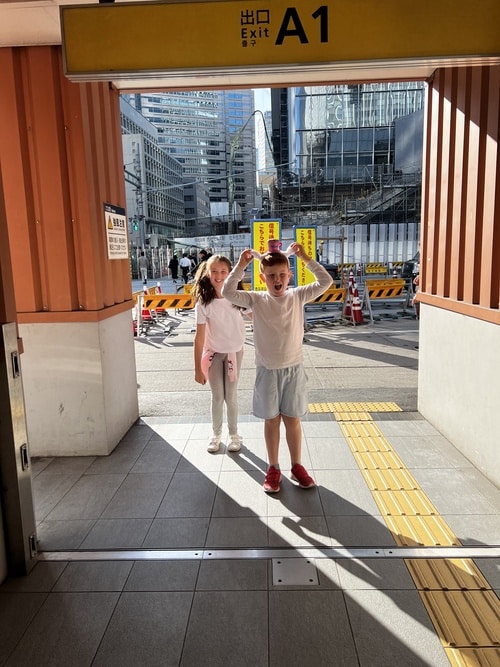
You know those clickbait-y articles or youtube clips that say things like ” 5 THINGS YOU MUST NOT DO IN JAPAN” or ” HOW TO MAKE JAPANESE PEOPLE ANNOYED IN PUBLIC” ….well clickbait is what it is.
Japanese people will rarely inform you that you are doing the wrong things so, in order to be mindful or just a culturally sensitive person in Japan you will often need to real the literal signs or just ” read the air” (This is a Japanese term for just feeling for the vibe around you.)
If you, like me, like to at least try to be a kind and respectful visitor while in Japan, I think talking to kids about train ettiquette ahead of time and / or reflecting afterwards is a fab learning experience (even if they don’t love every single part of it …then its cool to talk about why they didn’t like it, why they didn’t think it was efficient or practical etc.) Isn’t this kind of observational learning one of the reasons that we take children on trains in the first place, right?
I do advise avoiding peak hour with kids for the first few rides and then, maybe experiencing it once later in the trip? But NEVER with a stroller ( trust me.)
Tips on avoiding peak hour? See my post here called “The Anxious Parent Moment : The Japan Guide”
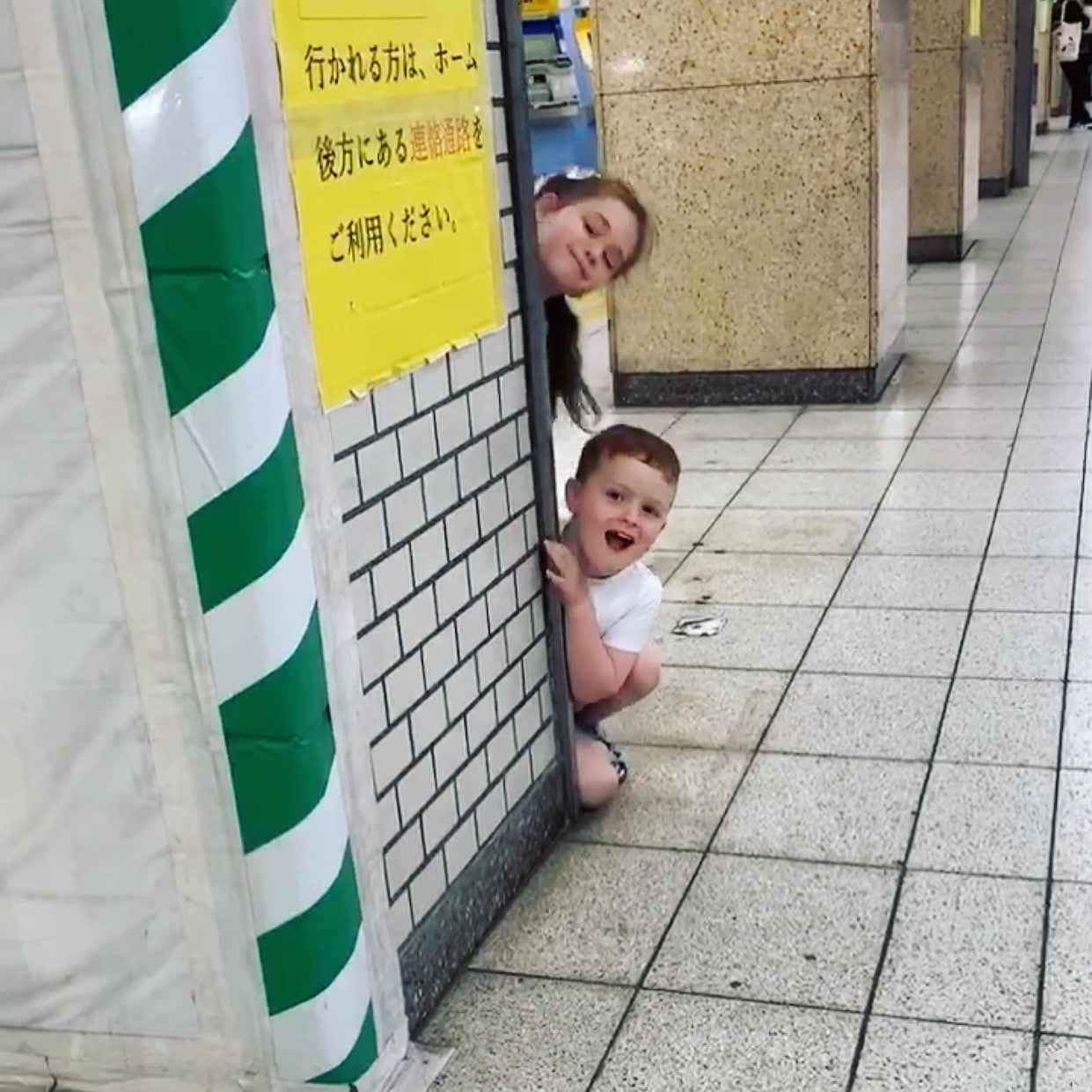

Here are some things you may want to discuss? (once again, no-one is going to jail if they do anything wrong …worst case is they may get annoyed looks from other passengers or warned by a station attendant. )
1) Letting passengers off the train before you get on
This is a no-brainer in most countries, right? In Japan, at busy stations there are usually two lines to wait for the train on the platform. Once the train has arrived, the lines split to either side of the carriage doors to let other passengers off first. Same rule applies for elevators. My kids sometimes need reminding that this will need to happen when the doors open.
2) Backpacks and large bags need to be taken off your back
Especially in the big cities. The reason is pretty straight forward – more space for other people. It’s common courtesy in Japan.
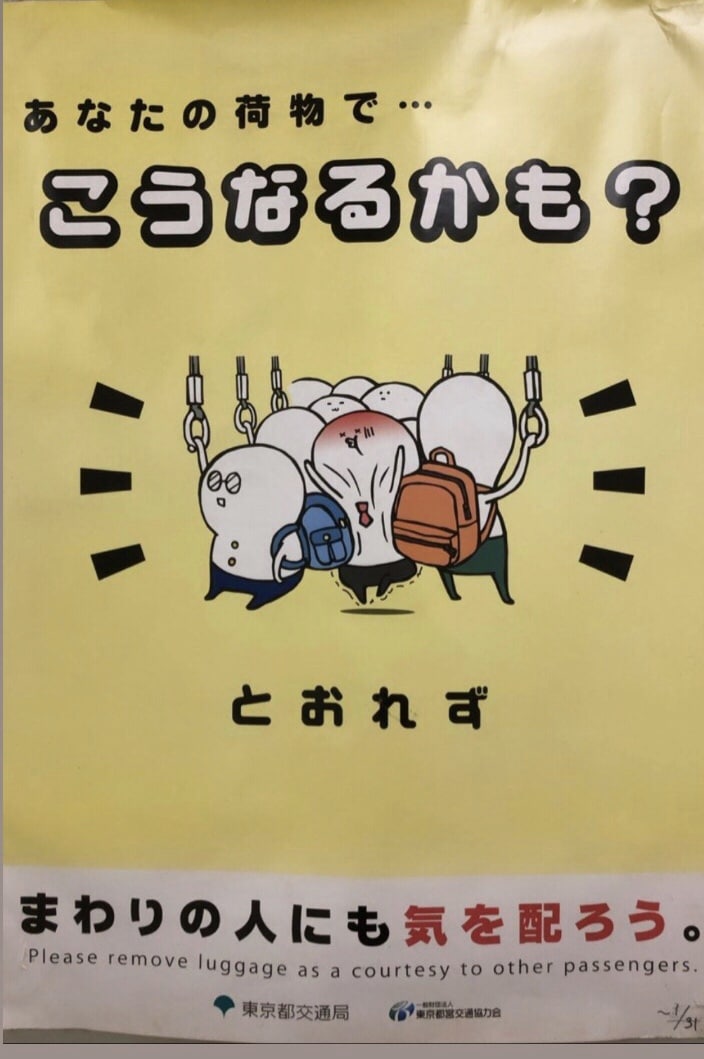
3) Phones and other devices on silent mode.
For watching a show or listening to music, headphones are a must. If you MUST ( and I mean must) take a call, the best mannered people will quickly tell the caller that they will call them back once off the train OR they get off at the next station to take the call – the luxury of a reliable and frequent train system, right?
On the bullet trains, you will need to take calls in the sections between the carriages. Even then, long phone calls aren’t really the thing. It’s expected that you’ll use this “between the carriage space” to just quickly say ” sorry I’m on the train. I’ll call you back.”
4) No smelly or crunchy foods & talking and laughing loudly won’t be appreciated
Just out of courtesy to others. It’s a different way of thinking but, in Japan, a train is a public space – shared by others – and so the consideration of others is of the highest importance. If you have small kids and they are noisy – try your best to remind them – but… if anyone gives you dirty looks about that? It’s their problem. Kids are kids. I am constantly telling my kids “can we turn the volume down a little please.”
And the food rule doesn’t apply to longer country train trips ( where there seat in front of you has a tray table, basically ) or a bullet train where bento boxes from home or purchased beforehand or onboard are totally fine.
Also, for short city train trips, if my kids are hungry I still give them small non-messy, non-smelly snacks such as a cracker or a slice of apple or a piece of candy etc. Why? Because kids are kids and they can’t always wait. Also, an M&M or a tantrum in the train? I know what I choose. Bribery is my friend as a mum.
5) Offering your seats to the elderly is kind but not seen as a must in the same way as in Western cultures.
This can be hard to adjust to but Japanese old people are often nimble, able and extremely capable. I think it is always kind to offer your seat by saying “douzo!” ( here you are!) but, if refused, let it be. You don’t want to offend anyone by bringing attention to the fact that you think they aren’t coping (its different, right?)
On the other hand, Japanese people aren’t fabulous at offering their seat to pregnant women. Its an issue. I think the best way to show others how important this is …is to lead by example. Pregnant women in Japan will have this badge hanging from their handbag.
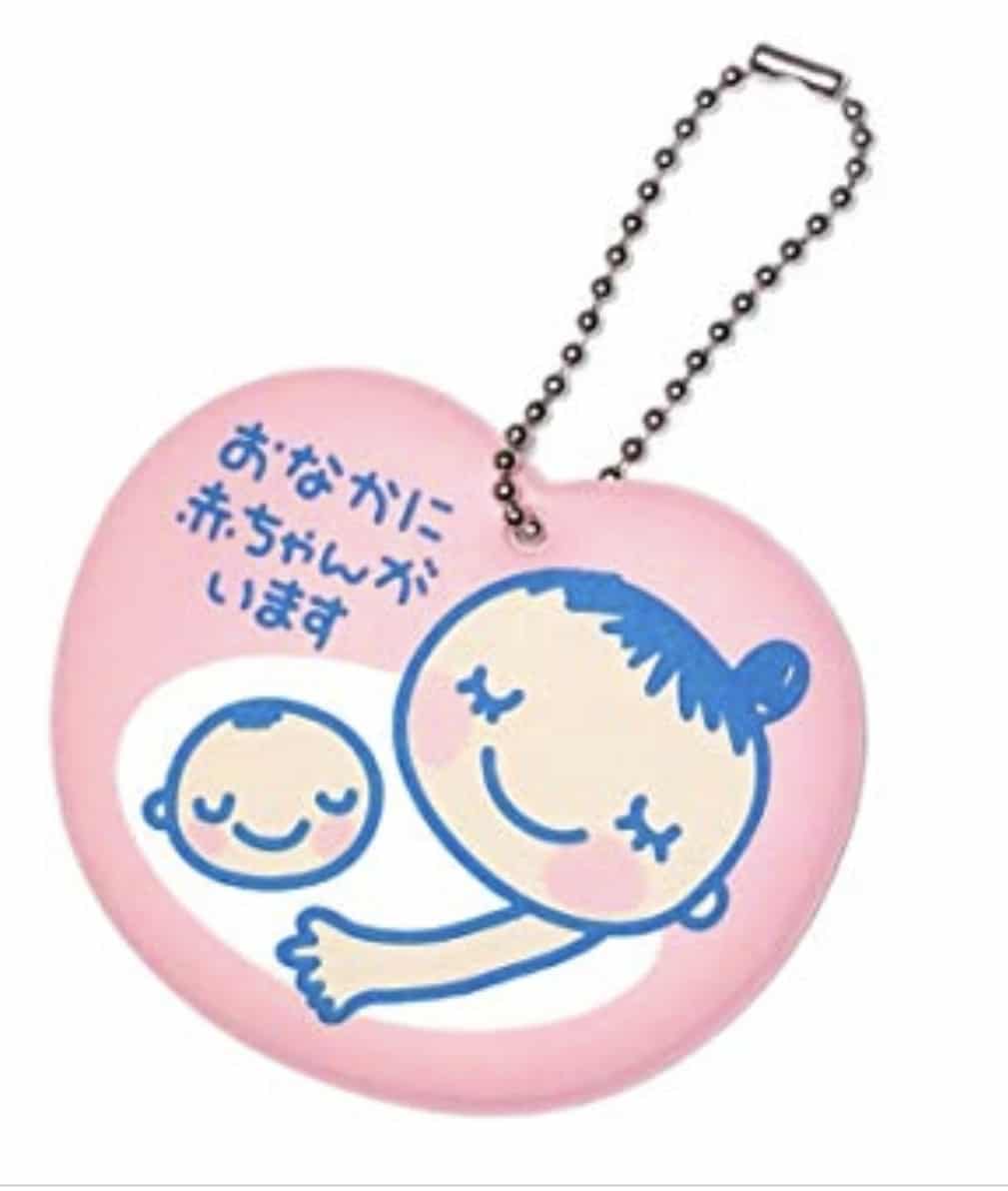
If you see it, please offer them your seat.
6) Take home any of your own rubbish
Like anywhere in Japan but especially on public transport. Leaving behind that empty juice bottle is so disrespectful in Japan. It sends the message that you think you are too good to dispose of it yourself and expect your fellow passengers to clean up after you.
7) If need to stop on a platform – more to the side or to a corner or stand against a wall.
For this amount of people, it is more important than ever to try and be spatially aware and keep the walkway spaces clear. In other words, don’t stop the flow. So you’ll catch me saying to my kids – I’ll stop for a cuddle in just a second then, let’s just get to that walk so everyone can still get to where they need to be. Same goes for if you need to stop to check google maps etc. Stand to the side (tourists blocking the walkways is one of the main complaints I hear about newbies from Japanese friends.)
8) Don’t take photos of people, without their permission. This is illegal in Japan
So think before you click that busy train photo. This is the real life commute for these passengers.
9) Swinging on the hand rails is a big no-no
I know.. most people probably know this but…you’d be surprised how many tourists let their children do this and it’s a pet peeve of Japanese people especially on a busy train. Sorry. I know this is really fun for kids but, unless you have no people around you. Don’t let kids do this .Please.
10) Wear a mask if you have a cold or cough
I think this is common sense.. but still… put it out there.
11) No shoes touching seats.
Even if your little one has little tiny legs and their legs don’t reach the end of the seats – the polite thing is to take off their shoes and just put them in front of their seat on the floor.
It’s also good to remind bigger kids that one leg up where their leg touches the seat part is also very disrespectful and considered to be unsanitary in Japan (and it .. actually is … the bottom of our shoes have been walking through puddles and all sorts of gross things throughout the day.
12) No luggage on seats (especially in the shinkansen)
This doesn’t mean you can’t put your handbag down etc but a suitcase or overnight bag? A big no-no (even if you plan to move it when someone else comes along.) You can, however, put it in front of your feet on the floor.
13) Follow the arrows when walking inside the stations
This helps keep the flow of people flowing but is also for your safety.

Extra tip: inner city trains show how the next stations coming up like pictured below.
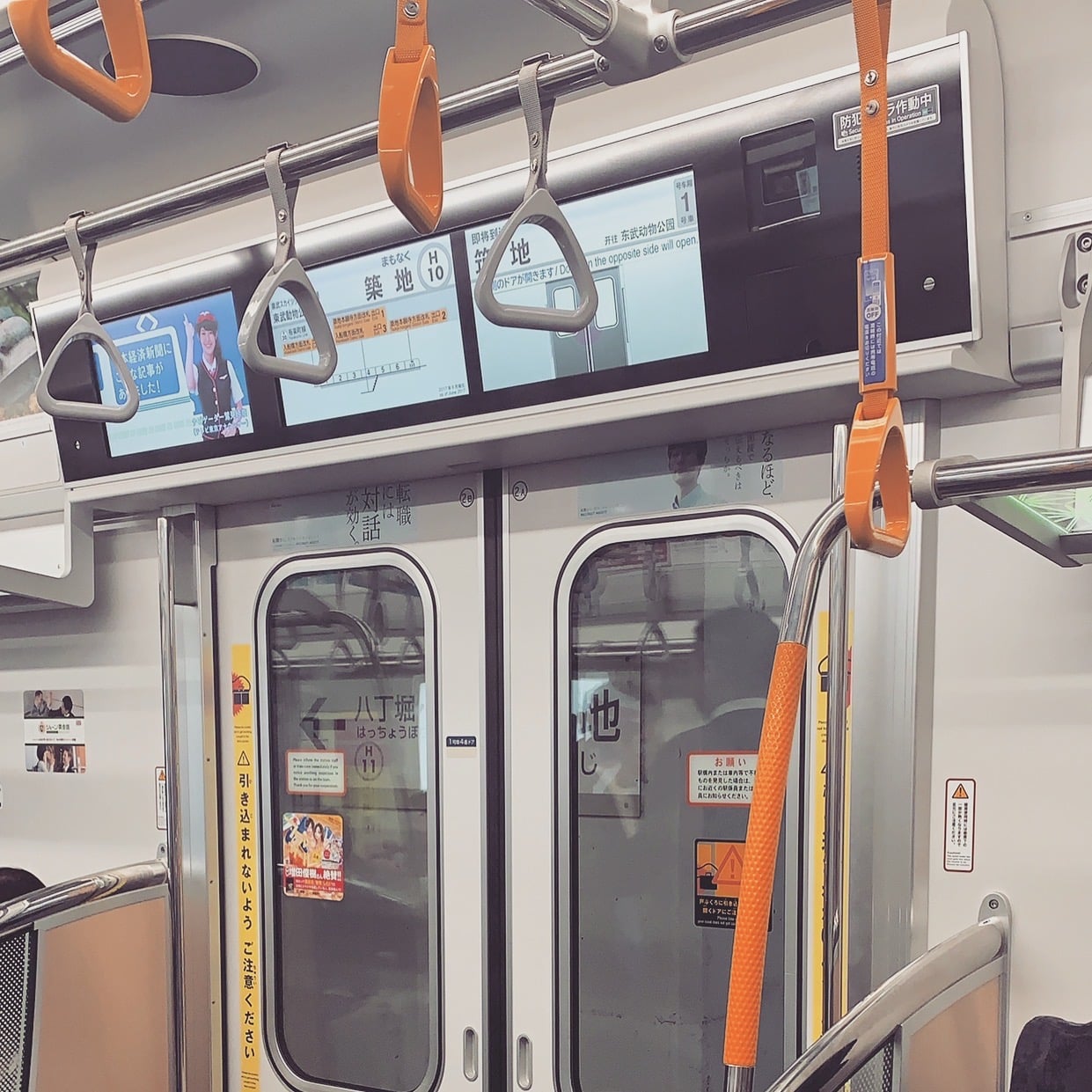
Additional quick tip: A really smart thing to do once your arrive at a new station is to get your bearings using the signs on the platform – especially for bigger stations. Read the information on exit numbers for your destination. It will save your feet having to backtrack (and your stress levels.). The signs are usually yellow and they will say something like ” National Art Museum. Exit B4″
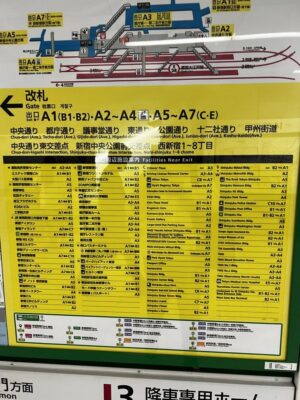
If you like this post I think you’ll also enjoy my tips for taking the bullet train with kids.
See here for my advice on When are peak train times in Japan.
Google Maps?
Most people already have this on your phone – however, if you don’t use google maps often, I highly highly recommend familiarizing yourself with how to use the app. Learn how to use it to help you get from one spot to the next and how to use the wheelchair accessible filter (this will show you how to easily find elevators when you have a stroller or lots of luggage.)
It is also a good idea to learn what the Shinkansen (aka bullet train) symbol looks like so you will know when you are to catch a normal train vs a bullet train.





